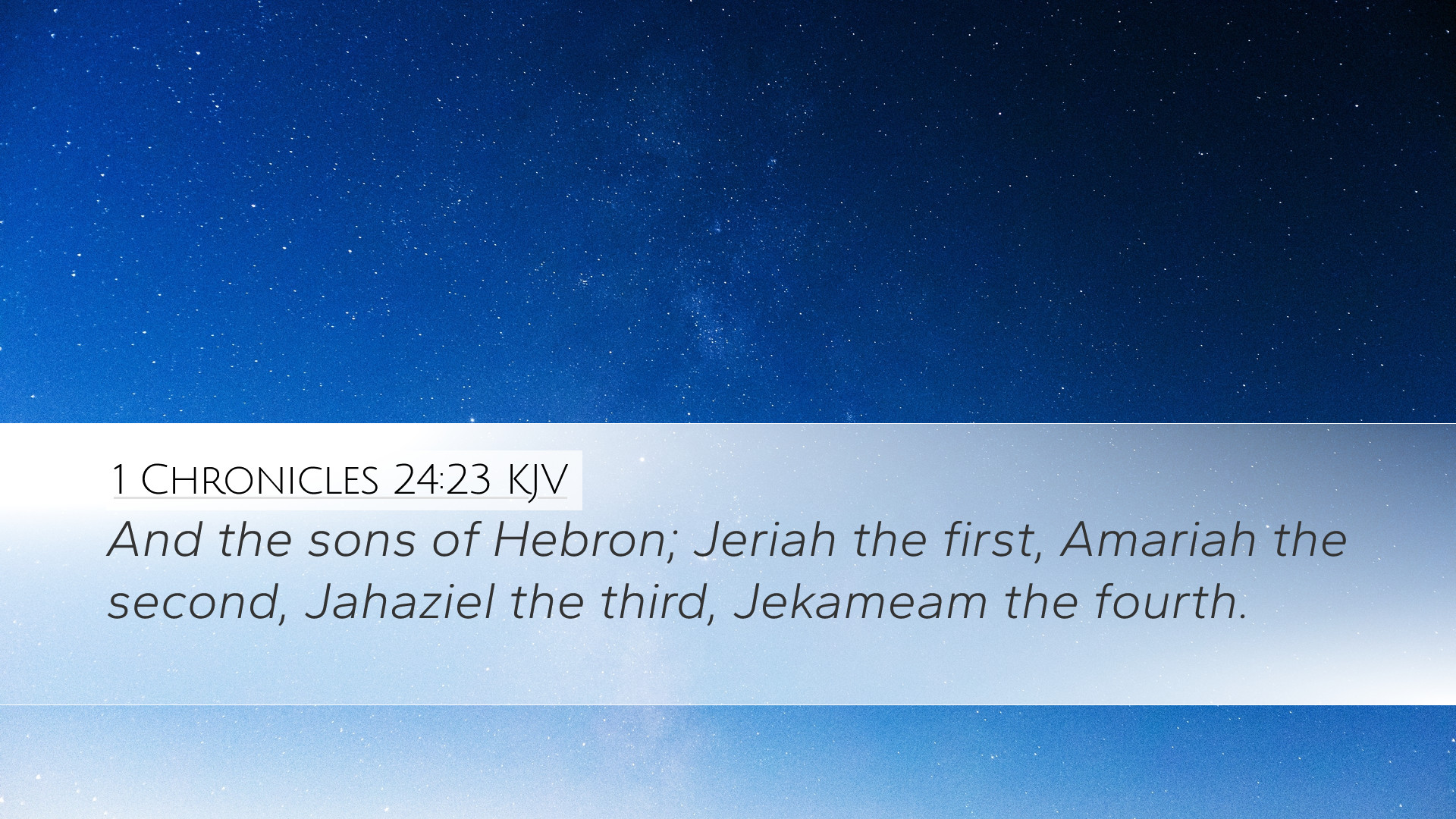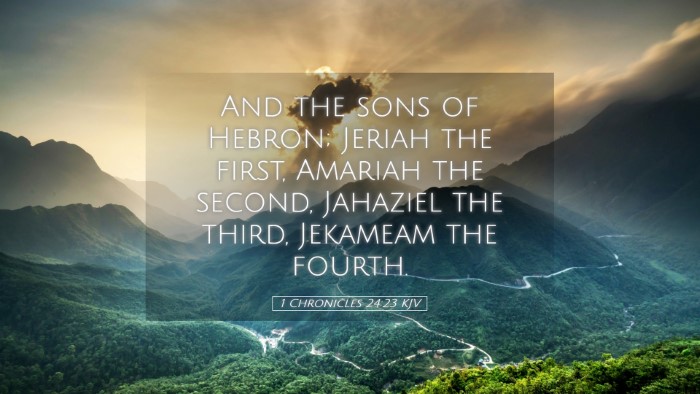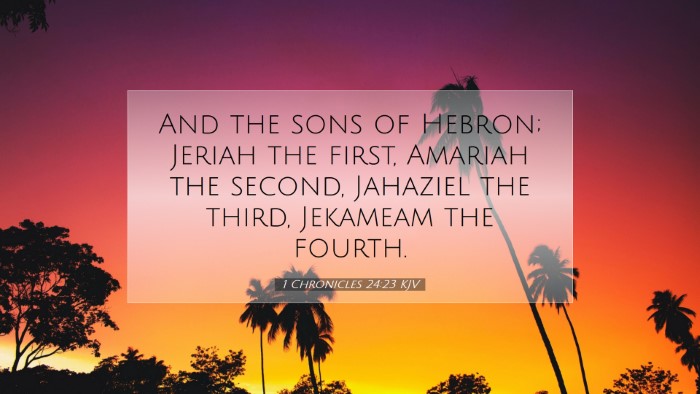Commentary on 1 Chronicles 24:23
Text of the Verse: "These were the descendants of Aaron and the priests who were listed by their families; so also were the Levites, the family of Jeshua, the son of Jehozedek, and of the family of Nehemiah, the son of Hachaliah." (1 Chronicles 24:23)
Introduction
This verse concludes a detailed list of priestly divisions established by King David. The context reflects the careful organization of priestly duties within the Temple service, highlighting the descendants of Aaron, who served as priests. The commentary aims to explore the theological significance, historical context, and implications for contemporary practice.
Theological Significance
The listing of the priests and their families emphasizes the continuity of God's covenant people and the significance of lineage in worship. Matthew Henry reflects on the importance of distinct roles within the community of believers:
- Preservation of Heritage: Matthew Henry notes that the meticulous record of priestly lineage ensures that the covenant community remembers its roots and the faithfulness of God through generations.
- Authority and Roles: Albert Barnes observes that the division of the Levitical priesthood into courses provides a model for how the church today may organize its ministry, ensuring order and accountability in worship.
Historical Context
The historical backdrop of 1 Chronicles is significant as it was written during a time of restoration after the Babylonian exile. Adam Clarke highlights the following points:
- Restoration of Worship: The return from exile necessitated the re-establishment of worship practices, and this listing underscores the effort to restore the Temple structure that had been lost.
- Leadership Structure: The organization into familial groups not only facilitated worship but also ensured a sense of identity and belonging among the people as they returned to their land.
Structure and Organization
The verse is part of a larger passage that details the duties of the priests, illustrating a structured approach to worship. According to Matthew Henry:
- Cultural Reflection: The structure reflects the culture of the time, where the priestly roles were not just spiritual but also societal, offering a safeguard against disorder in communal worship.
- Importance of Order: Adam Clarke emphasizes that order in ministry is crucial for the effectiveness of worship, drawing attention to Paul’s instructions in 1 Corinthians 14 regarding order in the church.
Contemporary Implications
In light of this verse, several contemporary applications emerge for pastors and theologians:
- Valuing Tradition: Understanding and valuing the traditions of faith can enrich worship practices today, creating a continuum from the biblical narratives to present expressions of faith.
- Structured Ministry: As Albert Barnes suggests, modern churches can benefit from a well-organized ministry structure that divides roles and responsibilities, ensuring that all gifts are utilized efficiently.
- Identity in Christ: Just as the priests were set apart, today’s believers are called to embrace their identity in Christ, serving in unique capacities within the body of the church.
Conclusion
The insights from 1 Chronicles 24:23 reveal a profound understanding of the importance of heritage, order, and the authority of roles within the church. By examining the pastoral reflections and historical significance outlined by commentaries, we see the value in learning from the past as we cultivate our current and future ministry. The structure established by God in the pattern of worship serves as a guide for maintaining reverence and order in modern practices.


